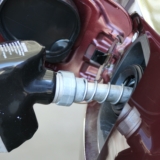Automakers’ Electric Vehicle Plans Face Challenges Amid Price War and Supply Chain Issues
In the race towards a greener, more electric future, two automotive giants, Ford and General Motors, have encountered a formidable speed bump that’s impacting their bottom lines and prompting a reevaluation of their electric vehicle (EV) strategies. Both companies are grappling with a price war and supply chain challenges that have put their electric aspirations to the test.
Last week, Ford released its earnings report, revealing a concerning quarterly loss before interest and taxes (EBIT) of $1.33 billion in its EV unit. This marked an acceleration from the previous quarter’s loss of $1.08 billion. In response to these financial setbacks, Ford has announced measures to mitigate losses, including a reduction in production of its Mustang Mach-E and a scaling back of approximately $12 billion in planned investments in the EV segment. Notably, the company is also postponing the construction of its second battery plant in Kentucky.
Ford CEO Jim Farley acknowledged the hurdles they’re facing, stating, “It’s been a challenging situation, for sure.” He attributed these challenges to the evolving EV market, new global competitors emerging from China, and the ongoing technological disruptions. Farley emphasized that simply offering a great product is no longer sufficient in the EV business, underlining the need to be “totally competitive on cost” due to affordability concerns among potential EV buyers.
Analysts from Wells Fargo pointed to rising battery raw material costs as a key factor negatively impacting the profitability outlook for battery electric vehicles (BEVs) and, consequently, Ford’s overall profitability.
General Motors (GM) has faced similar hurdles. The company disclosed that its quarterly profit saw a reduction of around $1.5 billion, largely due to increased costs and the effects of selling more EVs. GM, however, does not report losses from its EV unit in the same manner as Ford.
GM’s CFO, Paul Jacobson, shared the company’s revised strategy, which includes abandoning its interim goal of building 400,000 EVs between 2022 and mid-2024. Instead, GM is now focusing on the ambitious target of producing 1 million EVs by the end of 2025 while ensuring its margin goals are met. The company also plans to moderate the acceleration of EV production in North America to address pricing challenges and adapt to a slower near-term growth in demand.
In a note to investors, GM CEO Mary Barra acknowledged the changing dynamics of the EV market and how they impact the company’s financial performance. Barra stated, “Clearly, given the industry’s changing pricing and demand outlook and higher labor costs, we have work to do to ensure we achieve low to mid-single-digit EBIT EV margin targets in 2025, and grow our revenue and sustain strong 8-10% EBIT margins in North America.”
GM has further announced a delay in the planned retooling of a factory in Orion Township, Michigan, intended for the production of electric pickups. This decision is expected to save $1.5 billion in capital expenses for the year 2024 and aims to bolster profit margins once the facility commences production of electric Silverados and GMC Sierras.
In a notable development, GM and Honda have jointly announced the termination of their $5 billion partnership to co-develop affordable EVs. This initiative, launched a year ago, was aimed at combining their resources and expertise in the pursuit of more accessible electric vehicles. However, the changing landscape and demands of the EV market have prompted the two automakers to part ways in this endeavor.
As the automotive industry grapples with the transition to electric mobility, these challenges underscore the complex interplay of factors influencing the profitability and direction of the electric vehicle market. Both Ford and GM are adapting and strategizing to navigate this intricate landscape while striving to remain competitive and profitable in the evolving world of electric mobility.




